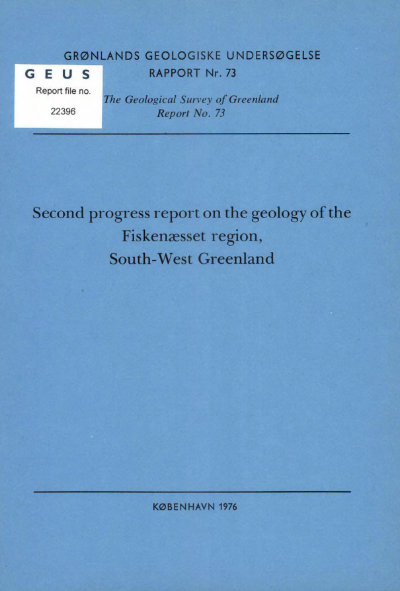Structures in an area north-east of Fiskenæsset, West Greenland
DOI:
https://doi.org/10.34194/rapggu.v73.7415Abstract
The area under discussion borders the Inland lce 75 km north-east of Fiskenæsset and consists of about 250 km2 of predominantly anorthositic gneisses, with streaky biotitic and homblendic gneisses forming the other major rock unit. Amphibolites and late rectilinear, unmetamorphosed basic dykes are of relatively minor importance, constituting probably less than 5% of the whole. All these units with the exceptionof the dolerite dykes are parallel or sub-parallel to one another and are disposed in a series of large, moderately tight folds with axial planes symmetrically related to the lithological banding. These folds in places are isoc1inal and their axial traces are gently curved, trending on average south-east (fig. 9). Immediately to the south of the area the trend of the major lithological units swings from south-east to south and then curves to the south-west, an effect ascribed to the influence of folds developed during the third and fourth fold episodes in the deformational sequence which is discussed here. On a large scale the tight to isoclinal folds refold other, attenuated isoclinal folds considered to belong to the first (Fl) set in the sequence recognised. All the major lithological units have been affected by the Fl episode of folding. Curvature of the axial traces of the first and second fold sets is due to a combination of effects arising predominantly from deformation during the fifth, sixth and seventh fold episodes. The effects of these on a large scale have not been distinguished individually, although the reversal of plunge sense in the central part of the area is almost certainly the result of folding on easterly trending Fs axial planes. Perhaps the most striking faet which emerges from the present investigation is the broad similarity between the fold sequence in this area and that determined from an area adjacent to the Frederikshåbs Isblink approximately 50 km to the south (Hopgood, 1973). The principal distinction between the two sequences is merelyadifference in orientation ofaxial planes of equivalent fold sets, especiaIly the earlier ones.
Downloads
Published
Issue
Section
License
This article is distributed under a CC-BY 4.0 licence, permitting free redistribution and reproduction for any purpose, even commercial, provided proper citation of the original work. Author(s) retain copyright over the article contents.


